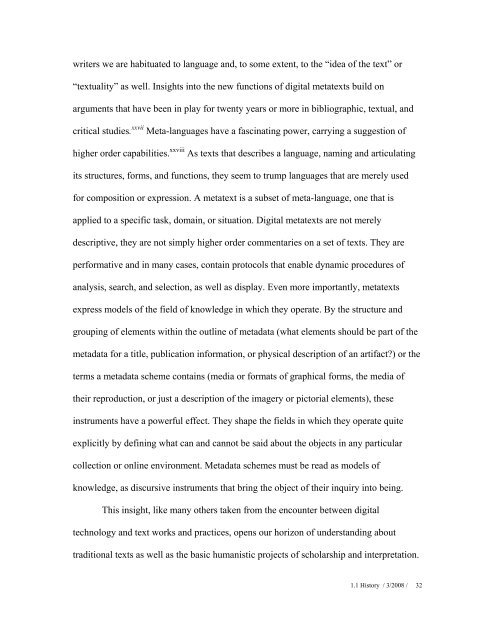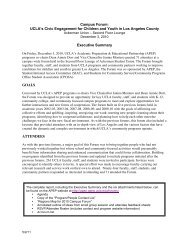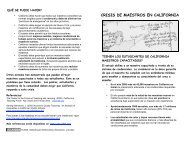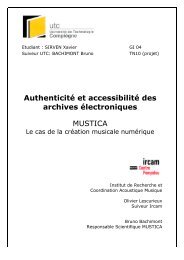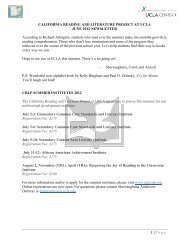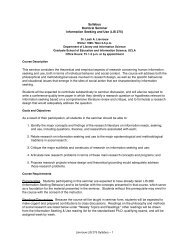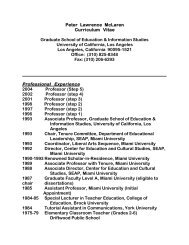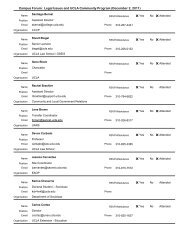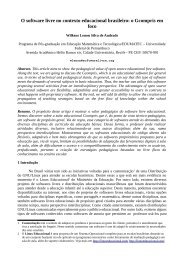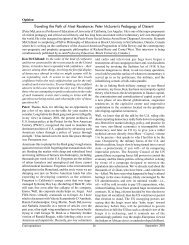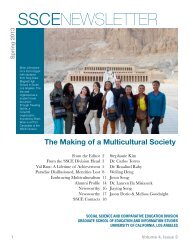1.1 From Digital Humanities to Speculative Computing - UCLA ...
1.1 From Digital Humanities to Speculative Computing - UCLA ...
1.1 From Digital Humanities to Speculative Computing - UCLA ...
You also want an ePaper? Increase the reach of your titles
YUMPU automatically turns print PDFs into web optimized ePapers that Google loves.
writers we are habituated <strong>to</strong> language and, <strong>to</strong> some extent, <strong>to</strong> the “idea of the text” or<br />
“textuality” as well. Insights in<strong>to</strong> the new functions of digital metatexts build on<br />
arguments that have been in play for twenty years or more in bibliographic, textual, and<br />
critical studies. xxvii Meta-languages have a fascinating power, carrying a suggestion of<br />
higher order capabilities. xxviii As texts that describes a language, naming and articulating<br />
its structures, forms, and functions, they seem <strong>to</strong> trump languages that are merely used<br />
for composition or expression. A metatext is a subset of meta-language, one that is<br />
applied <strong>to</strong> a specific task, domain, or situation. <strong>Digital</strong> metatexts are not merely<br />
descriptive, they are not simply higher order commentaries on a set of texts. They are<br />
performative and in many cases, contain pro<strong>to</strong>cols that enable dynamic procedures of<br />
analysis, search, and selection, as well as display. Even more importantly, metatexts<br />
express models of the field of knowledge in which they operate. By the structure and<br />
grouping of elements within the outline of metadata (what elements should be part of the<br />
metadata for a title, publication information, or physical description of an artifact?) or the<br />
terms a metadata scheme contains (media or formats of graphical forms, the media of<br />
their reproduction, or just a description of the imagery or pic<strong>to</strong>rial elements), these<br />
instruments have a powerful effect. They shape the fields in which they operate quite<br />
explicitly by defining what can and cannot be said about the objects in any particular<br />
collection or online environment. Metadata schemes must be read as models of<br />
knowledge, as discursive instruments that bring the object of their inquiry in<strong>to</strong> being.<br />
This insight, like many others taken from the encounter between digital<br />
technology and text works and practices, opens our horizon of understanding about<br />
traditional texts as well as the basic humanistic projects of scholarship and interpretation.<br />
<strong>1.1</strong> His<strong>to</strong>ry / 3/2008 /<br />
32


